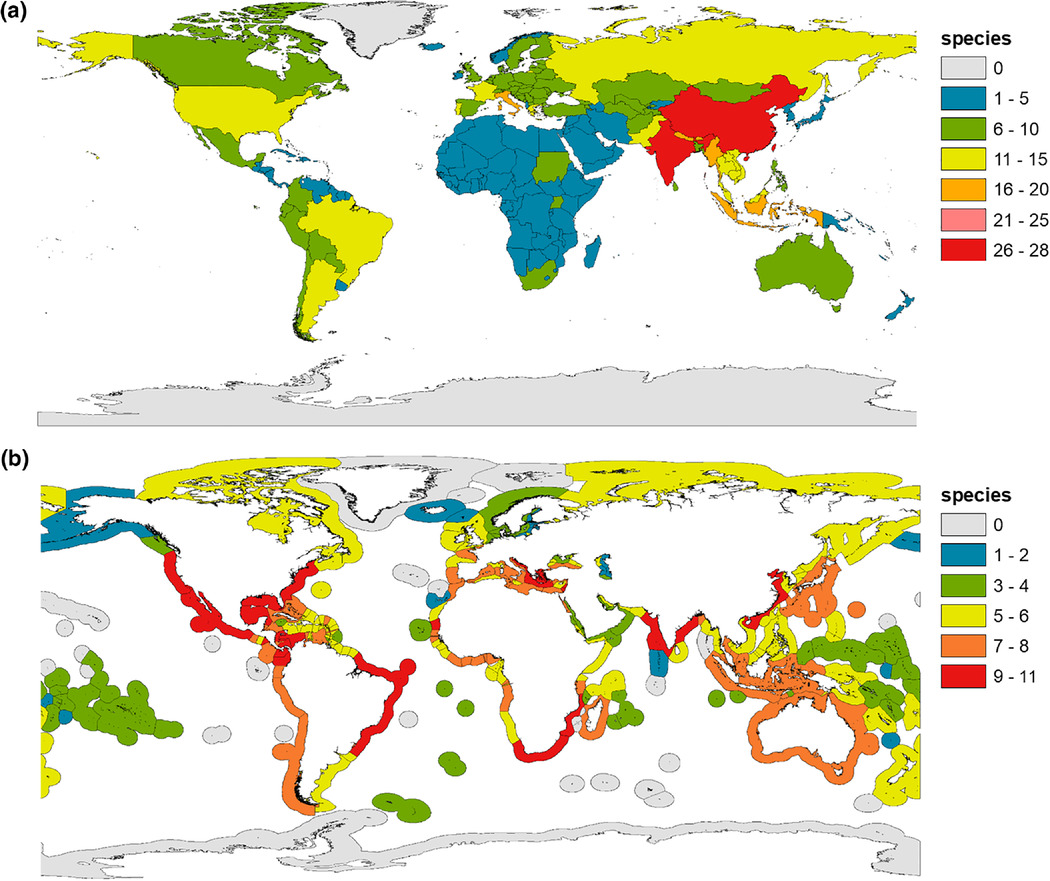(September 07, 2021) --

Scientists around the world worked together to create a new tool, known as the Green Status of Species, to define the stability and recovery of species. Dauphin Island Sea Lab Senior Marine Scientist and University of South Alabama Department of Marine Sciences professor, Dr. Ruth H. Carmichael, was among the more than 200 scientists who helped to complete the initial species assessments that enabled the development of the tool on behalf of the International Union for the Conservation of Nature (IUCN).
While the IUCN Red List of Species identifies species at risk of extinction, the Green Status of Species identifies conservation success and recovery progress of a species. This new status considers a species' historical population size, present-day distribution, the success of previous conservation efforts, and viable habitat. The first assessments included 181 species and the result of this large collaborative effort was published in the journal, Conservation Biology, this summer.
For every one of the 181 species, the IUCN set a standard assessment workbook with instructions for data entry and documentation fields. This method created a universal framework to understand which conservation efforts are improving or maintaining the recovery of a species. The framework also helped to define categories of recovery status. For example, the giant panda was downlisted from endangered to vulnerable in 2016. However, the giant panda's recovery depends on active, ongoing conservation efforts. The new tool allows this type of information to be integrated into the IUCN Red List.
For her part, Dr. Carmichael worked with a team from the United States and Mexico to map out the impact of conservation efforts on the American horseshoe crab (Limulus polyphemus), one of four living species of horseshoe crabs worldwide. All horseshoe crabs are impacted to some extent by harvesting and the loss or degradation of habitat. American horseshoe crabs are found on the U.S. Atlantic and northern Gulf of Mexico coasts, including in Alabama waters. Conservation and management efforts have helped to curb species loss and support recovery. Horseshoe crabs are known for having uniquely blue-colored blood that is used to detect bacterial contamination in biomedical products, thus, protecting human health.
For an in-depth look at the IUCN study, view the publication, "Testing a global standard for quantifying species recovery and assessing conservation impact". To learn more about horseshoe crab status and conservation, view Dr. Carmichael’s other recent publication, “Horseshoe Crabs: “Living Fossils” Imperiled in the Anthropocene”.